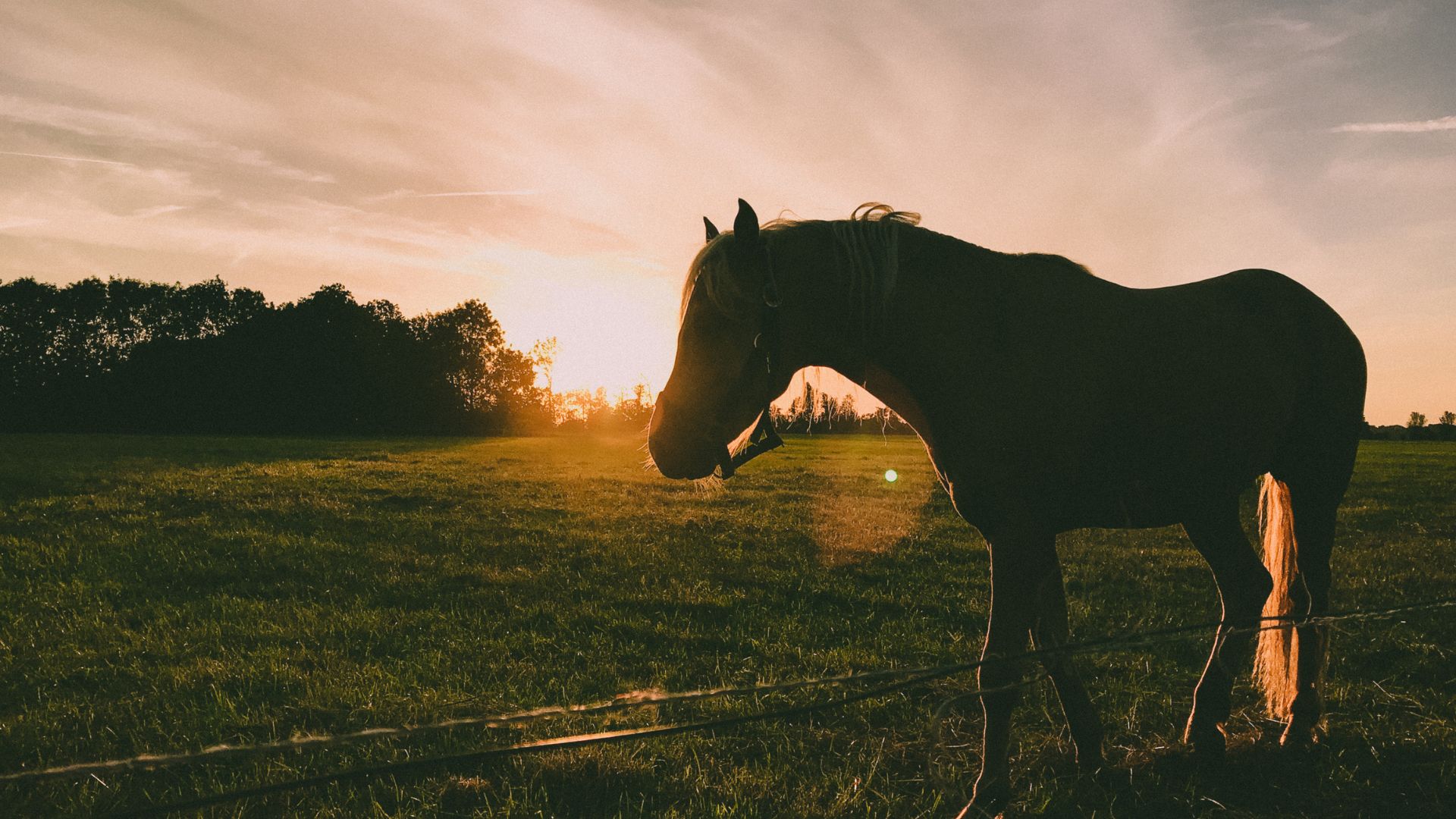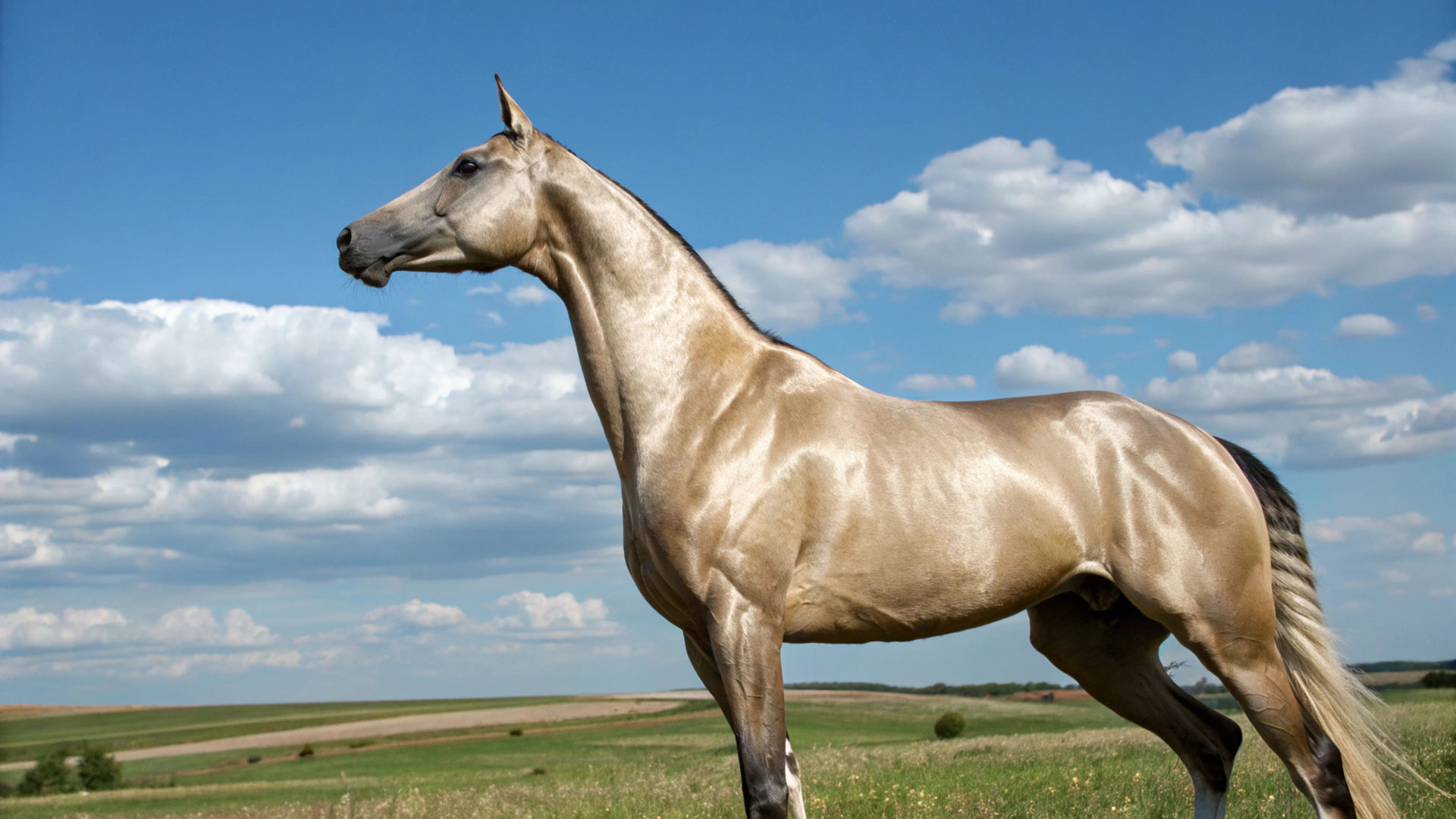
The different horse coat colours and patterns
We have seen that horses and ponies have different coat colours and patterns. Despite all of them being beautiful, we love seeing this variety amidst our equine friends. We expand a bit on the different horse coat colours and patterns we can observe worldwide.
Bay: the most common horse colour
The bay horse can go from a pale brown to a very dark brown. The legs are black from the knee downward and the eyes are brown. This brown horse is extremely beautiful; however, it is also the most common colour for horses.
When foals are born, they are brown with a black mane and tail and greyish legs. As they grow up, the legs lighten before turning black. This normally happens when the foal is 4-6 months of age.
Where did they get this colour? Bay horses are the result of a black base colour that is combined with an agouti gene. This controls the distribution of the black pigment.
Gray: a classic elegant colour coat
Gray horses are very common, and they can vary from almost white to dark gray. These horses are born with one colour (black, palomino, chestnut…) but a modifying gene turns their coat gray as they mature. They can be very pale or very dark. The mane and tail of these horses is also gray.
Black Horse: a beautiful horse coat colour
This black coat is very beautiful on horses, and these black horses have a black mane and tail. This is because black is the dominant base colour and they are entirely black. In some exceptions, horses can have a white head or leg mark.
In addition, on occasions some black horses can fade during the summer in the sun. This will show some brown tint in their coats. Just as when we go to the beach and our hair turns blonder!
We recommend: Do you know what the competition regulations dictate about using a whip on horses? Find it out
Appaloosa: not the correct term for these horses
In the past, appaloosa is a term that has been used to describe a spotted horse or pony. However, this is not correct, as it is not a colour or a coat pattern. Appaloosa is a breed of horses with mustang origins, and often they are spotted.
Nowadays when we see a spotted horse coat pattern, we should refer to it as spotted to be more accurate. Appaloosa should only be used when referring to the horse breed.
If you remember our Facebook or Twitter post, we mentioned the Appaloosa as other popular horse breeds around the world. Check it out!
The types of spotted patterns we can see in horses are very distinct and unique: Leopard spot, near leopard, spotted blanket, white blanket, snowflake, marble….
Dun: the creamy golden colour
Dun horses have a creamy golden body, but this can vary from a pale to a rich gold. The mane and the tail are black with some light hairs, and their lower legs are black. They are the result of a dun dilution gene: the classic dun combines the dun gene with a bay base colour. With a chestnut base colour, it produces a Red Dun.
These horses display a black dorsal stripe. This distinguishes them from buckskin horses that have a similar coat colour but do not have this marking.
Overo: the white colour pattern on horses
This coat pattern can be combined with any colour. Horses with the overo pattern have big white spots that originate on the belly and extends across the body. However, it rarely goes between its withers and tail. The edges of colour are scattered and the head tends to be white.
Cremello: the most impressive pale coat
These horses are extremely pale and range from almost white to pale cream. These white horses have blue or amber eyes and almost white hair. When born, foals are light cream and white markings are often visible. When they grow older these white markings become practically invisible and are hard to distinguish.
Cremello horses are a result of having chestnut as a base colour and combining it with two cream dilution genes. These horses are often referred to as Albino horses, however this is a misconception.
Palomino: the rich golden coat
Palominos have a golden body just as Dun horses; however, the mane and tail of palominos are white. They are the result of a base colour of chestnut combined with a single cream dilution gene.
For many, palominos are one of the most visually appealing horses. They could have originated in the desert as light shiny colour has evolved to survive the desert sun’s heat. Their coat is highly reflective and absorbs little heat.












_v2.svg)
_v2.svg)









_v2.svg)


